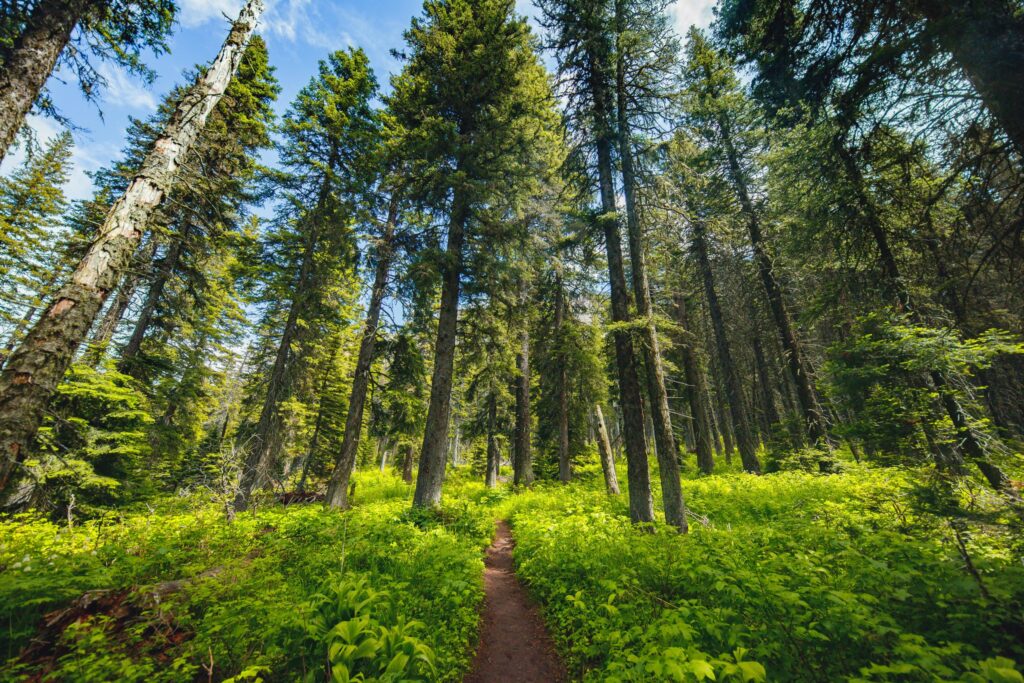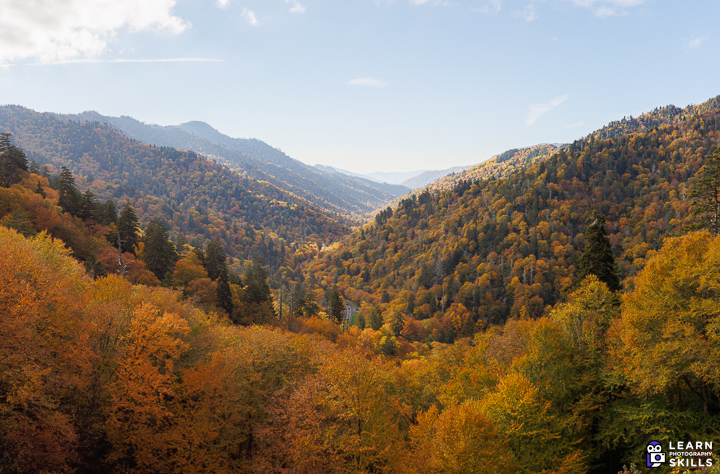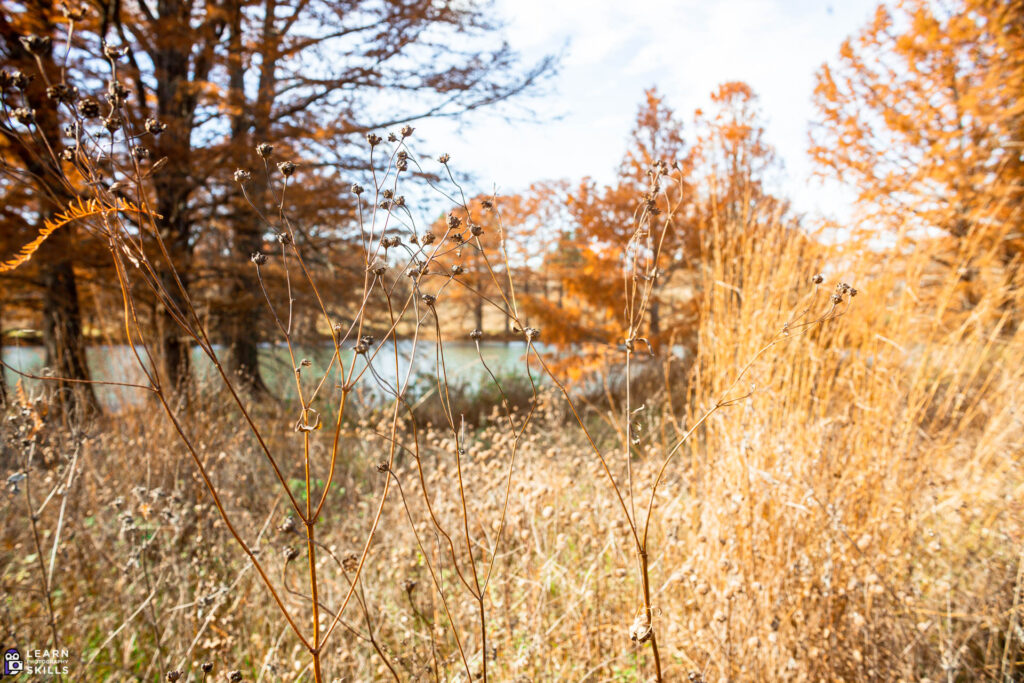Landscape photography is a popular genre because it is easy to get into and seems like nothing but fun. However, it’s easy to fall into a creative rut. In these 5 tips I’ll give you some ideas to kickstart your creativity.
Lesson 1: Show nature’s scale.

Relative to people nature has a tremendous scale. The foot path I am walking on is visible which shows the human scale relative to this grove of pine trees. The extreme perspective lines also create a sense of never ending heights reached by the trees. There are many ways to show the scale of scenes. Tall trees, tall mountains, wide lakes, etc. Nature’s splendor is often all about the sheer scale of things.
Lesson 2: Blur out the background.
Photos of natural scenes can be really cool looking when they’re blurred out to different degrees. One way to get this effect is to focus in on something that is in the foreground, like these strange plants that I focused on in the photo above. The interplay of the blurred background and plants in the foreground make for a visually interesting image.
Lesson 3: Use a telephoto.
90% of photographers automatically think wide angle for landscapes photos. But telephoto’s can flatten perspective and make long shots look like they were taken from higher up than they really were. This ability to lift up the viewers perception gives long shots taken with a telephoto a kind of magical floating quality. The technical name for this effect is “telephoto compression“. The telephoto also gives tons of options for creating photos at a distance, which can mean getting pictures that would either take forever to hike to, or would be literally impossible to get without flying there in a helicopter.
Lesson 4: Try lens filters.
Lens filters can give images different looks in different kinds of light so you’ll have to mess around with them over time to get a hang of how they work. Most lens filters such as UV filters or Haze filters attempt to increase contrast in the final image. They do this by removing stray light that is bouncing off the atmosphere or doing strange things inside your camera lens. Since they work by blocking out a certain frequency range of light they can sometimes have odd effects. During fall a UV filter will block out the opposite color of the leaves, (blue/purple and yellow/orange are complimentary), this causes the leaves to stand out more.
Lesson 5: Look at the clouds.
Clouds can create drama in several different ways. If you understand how turbulence works you can see how the clouds appear to be blowing over the tops of these mountains. Clouds also create unique lighting conditions and sometimes even cause patterns of light to move across the landscape. Clouds are the one part of a scene that can change from one minute to the next so they can be a fun way to create new kinds of images. How many times have you said to yourself that you wished it was nice out so you could go take pictures? When it comes to landscape photography you should try believe that every day is “nice out”.





